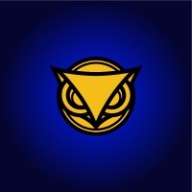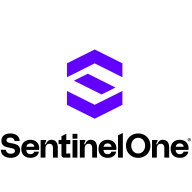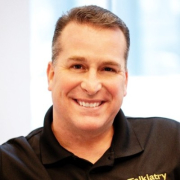

SentinelOne Singularity Complete and Cybereason Endpoint Detection & Response are two competing products in the endpoint security market. SentinelOne has an edge in pricing and support, while Cybereason is favored for its features.
Features: SentinelOne Singularity Complete offers advanced automated threat detection, response, and remediation, recognized for its autonomous operations and real-time threat intelligence. Cybereason Endpoint Detection & Response provides in-depth threat analysis, contextual data modeling, and proactive threat hunting, delivering comprehensive visibility and a proactive security stance.
Room for Improvement: SentinelOne users seek better integration capabilities with other security products, more detailed reporting functionalities, and enhancements in threat detection speed. Cybereason users want improvements in threat detection speed, simplification of complex tasks, and enhanced efficiency and user-friendliness.
Ease of Deployment and Customer Service: SentinelOne Singularity Complete is praised for its straightforward deployment process and responsive customer support. Cybereason users appreciate flexible deployment options but report mixed experiences with customer service.
Pricing and ROI: SentinelOne Singularity Complete is seen as cost-effective with substantial ROI, delivering high security value appropriate for its cost. Cybereason Endpoint Detection & Response, while more expensive, is justified by its advanced feature set and the perceived long-term value by users.
SentinelOne Singularity Complete has helped reduce my organization's mean time to detect by fifty percent.
Since then, I have not faced any intrusions, which is one reason I chose SentinelOne over ESET.
We have not faced any attacks since we implemented it.
Nine is great actually since we have people available when we ask, and they know what they are talking about.
if you're a partner with them, they provide fairly good support through a concept called invest support.
We are using the automated email process for support, and they respond within an hour or two hours sometimes.
A chat service would be beneficial.
The technical support from SentinelOne Singularity Complete is very active and good, with a strong knowledge base available online.
It's all auto-scale and auto-categorized, configuring automatically.
SentinelOne Singularity Complete is very scalable.
My deployment is relatively small, and SentinelOne Singularity Complete works within those constraints.
We inform Cybereason about any issues, and they work on a new solution, either with an update or a custom fix in anticipation of the next update.
This indicates room for improvement in stability when interacting with other solutions.
Initially, there were issues, particularly on the management side, but now the console is much more stable.
Everything is managed automatically, so there is no user interference needed for upgrades.
The only thing that prevented the attack from succeeding was a free version of Malwarebytes.
Providing a single pane of visibility for the end user would be beneficial.
That seems to play a little havoc and can conflict with manual installs, causing issues where it wants to delete and reinstall the client.
If you want protection, you have to pay the price.
There are other products that are less expensive, but I tell my clients that in security, they cannot cut corners or look for the cheapest solution.
Reputation and quality are important, but especially in today’s economy, price is a significant factor.
What I find most valuable is the clarity of the platform.
I have an advanced app providing visibility of all my endpoints, which was not the case before.
SentinelOne has a feature to decommission automatically, which has been fantastic.
There's also automation that gives my team free time, preventing them from having to look for every alert.
| Product | Market Share (%) |
|---|---|
| SentinelOne Singularity Complete | 5.1% |
| Cybereason Endpoint Detection & Response | 1.1% |
| Other | 93.8% |

| Company Size | Count |
|---|---|
| Small Business | 5 |
| Midsize Enterprise | 4 |
| Large Enterprise | 13 |
| Company Size | Count |
|---|---|
| Small Business | 87 |
| Midsize Enterprise | 44 |
| Large Enterprise | 76 |
Cybereason's Endpoint Detection and Response platform detects in real-time both signature and non-signature-based attacks and accelerates incident investigation and response. Cybereason connects together individual pieces of evidence to form a complete picture of a malicious operation.
SentinelOne Singularity Complete delivers advanced endpoint protection leveraging AI-driven threat detection and behavior analysis for efficient malware and ransomware response. Its standout features enhance security insights and ensure comprehensive endpoint management.
SentinelOne Singularity Complete provides robust ransomware recovery through unique rollback capabilities and seamless integration with various security solutions. Its machine learning enhances endpoint protection, minimizing false positives and automating responses. While praised for real-time threat monitoring, incident management, and asset management, it faces challenges in managing the console, customizing UI, and maintaining policy flexibility. Some users report difficulties with deployment and integration with existing systems, and enhanced reporting, alert management, and documentation are desired. Its appeal extends to deploying across multiple operating systems, offering comprehensive security coverage and facilitating cybersecurity compliance.
What standout features does SentinelOne Singularity Complete offer?Industries implement SentinelOne Singularity Complete for its AI capabilities in advanced endpoint protection, particularly against malware and ransomware. It's utilized across diverse operating systems, aiding in real-time threat monitoring and facilitating compliance. Organizations use it for vulnerability assessments and asset management, ensuring optimal protection in complex IT environments.
We monitor all Endpoint Detection and Response (EDR) reviews to prevent fraudulent reviews and keep review quality high. We do not post reviews by company employees or direct competitors. We validate each review for authenticity via cross-reference with LinkedIn, and personal follow-up with the reviewer when necessary.